Pole buildings are popular among farmers and business owners for their large open spaces, durability, and low cost. But even the most well-built pole barn can use some insulation to improve energy efficiency and comfort. If you have no idea how to proceed with overall insulation, you're on the right page! We did the research to help you out with this concern.
To insulate a pole building, start by assessing its needs and choosing the suitable material for the job. Here are some popular ways that you can try:
- To insulate the roof, consider using a batt or roll insulation within the joists and spray foam for the top.
- For the ceiling, you can use blown insulation.
- You can use batt or roll insulation and spray foam insulation for the walls.
Now that you know what type of insulation you need for these areas, read on as we tackle the essential steps in applying them and what tools you will need for this project. We'll also discuss the factors you need to look into and more about insulating a pole building.
![Building frame composition. Steel frame of the building with timber joists and sandwich panels on the roof. Modern construction of industrial buildings. Hangar construction, How To Insulate A Pole Building [Inc. Roof, Ceiling, And Walls]](https://hvacseer.com/wp-content/uploads/2022/10/1.-How-To-Insulate-A-Pole-Building-Inc.-Roof-Ceiling-And-Walls.jpg)
Pole Building Insulation 101
Here are the methods you can use to apply insulation to different areas of your pole building:
Roof Insulation Using Batts
1. Using a tape measure, measure all the rafters to know how many batts you need and cut them to size. Then mark the joists.
Click here to see this product on Amazon.
2. Create an air gap that's about 2 inches wide for installing insulation joints within joists to allow air movement and ventilation.
3. Batts can be pushed into place. They come in paper backing or a vapor control layer. Staple them to the joists, making sure not to over-compress them to avoid diminishing their insulating ability.
4. Install a vapor barrier with a staple gun. Fold it at each joist for a thicker layer.
Blown Insulation For The Ceiling
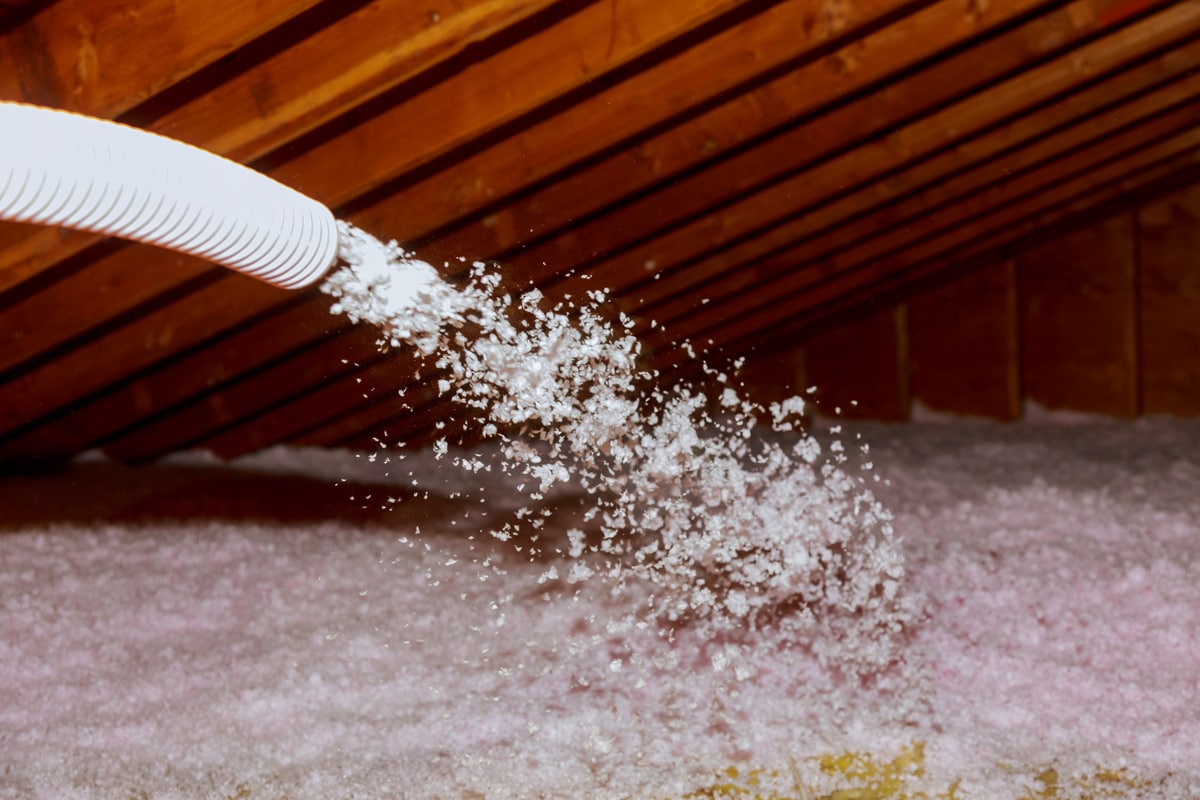
For ceilings, you can easily add blown insulation to the space. Follow these steps for insulating your ceiling:
1. Make sure to put up barriers to prevent the insulation from entering areas like the walk area and the hatch.
2. Prepare your blowing machine by hooking up the hose and filling the device with a bag of insulating material.
3. Turn on your machine and start blowing the material into the desired area by starting at the farthest part of the ceiling up to the barriers you just installed.
Watch this attic insulation video for a visual guide that you can also follow when you do the blown-in insulation for your pole barn with a sloped ceiling:
Wall Insulation Using Fiberglass Batts (Batt or Roll Insulation)

As with any installation, precautionary measures should be taken before installing this type.
Precautionary Measures
The Occupational Safety and Health Administration recommends that you protect yourself against irritation of your skin, eyes, and lungs when doing fiberglass wall insulation.
Use personal protective equipment such as long-sleeved shirts, long pants, and gloves. Make sure the area is well ventilated.
Installation
Fiberglass insulation is fire-resistant and nontoxic, making it a safe choice for use in your home. To install it, follow the easy steps below:
1. Prepare the wall by sealing gaps and holes with caulking sealant and foam sealant.
2. Spread the batt between the joists with the vapor retarder facing you.
3. Avoid compressing too much by just lightly pressing the batts on the walls.
4. Use a rotary cutter to cut the batting to the desired size if the need arises.
5. Secure the batts using staples.
6. Use scraps to fill small spaces around window and door frames and caulk afterward to prevent drafts from coming in. Avoid overstuffing and spraying foam on these areas to prevent it from overexpanding.
Here is a video that you can easily follow to help you install fiberglass insulation properly:

 Why Use Spray Foam Insulation?
Why Use Spray Foam Insulation?
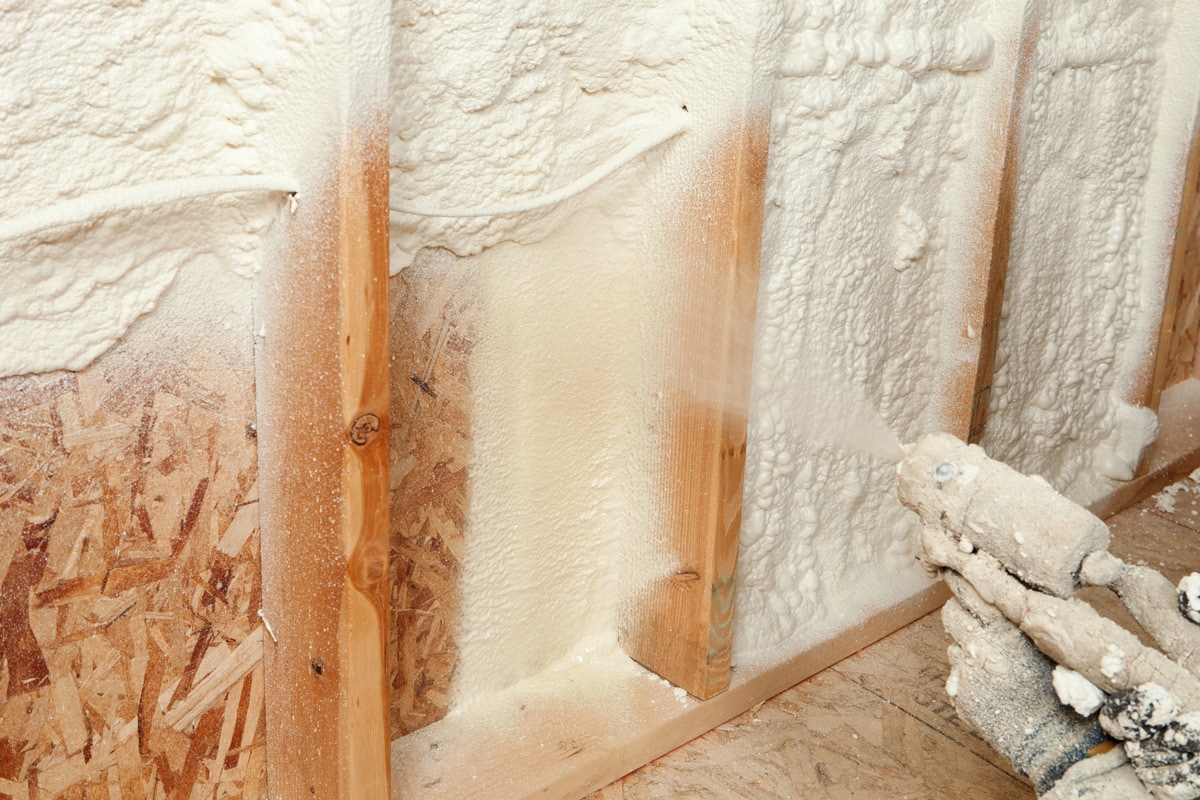
You can easily use spray foam insulation by spraying directly into the surface. Residential and commercial spaces commonly use this type due to its effectiveness.
Components Of Spray Foam
Spray foam insulation comprises two main ingredients: polyurethane and isocyanate. Mixing and spraying them in areas to be insulated creates a protective barrier against heat and cold.
Polyurethane is plastic made from petroleum, while isocyanate is a chemical compound derived from natural gas. Together, these two materials create durable, effective insulation that can help improve the energy efficiency of any building.
Types Of Spray Foam Insulation
Closed-cell spray foam seals small gaps and cracks more effectively because of its higher density. However, it is also more expensive and challenging to work with.
Open-cell spray foam is less dense and easier to install but does not provide as much insulation as the first.
Advantages Of Roof Insulation Using Spray Foam
Insulating rafters with spray foam creates an environment where the temperature outside is proportional to the inside of a building. Thus, it can keep moisture outside the attic space so that you won't expect problems in air infiltration.
What Is Blown Insulation?
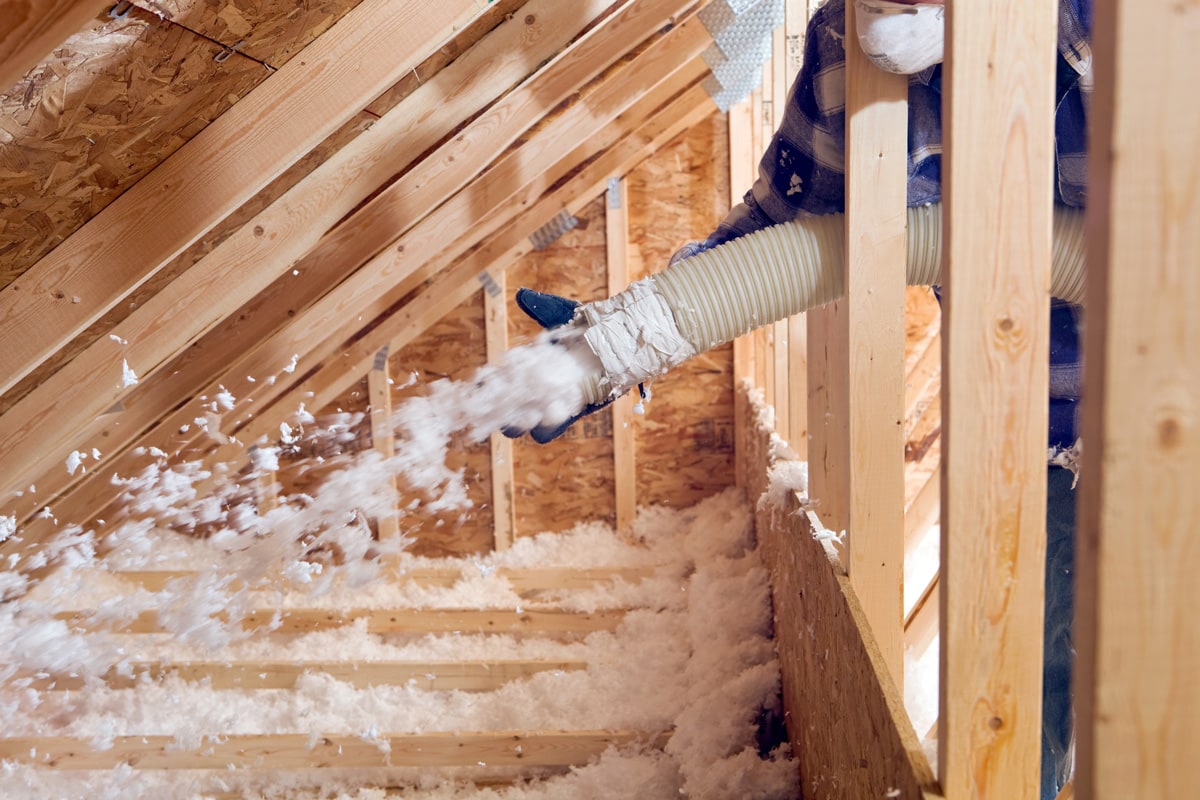
Blown insulation uses a machine to blow the material into hard-to-reach areas, such as attics or crawl spaces. It is available in various materials, including fiberglass, cellulose, and mineral wool.
Material Advantages And Disadvantages
- Fiberglass insulation is cheap and easy to apply. However, it can irritate the skin and lungs.
- Cellulose insulation uses materials from recycled newspapers, making it an eco-friendly choice. The downfall will be its effectiveness in preventing heat loss than the other types.
- Mineral wool insulation is made from rock or slag wool and is an excellent choice for fireproofing. However, it can be expensive.
Why Use Batt And Roll Insulation?
This type of insulation comprises these two methods:
Batt Insulation
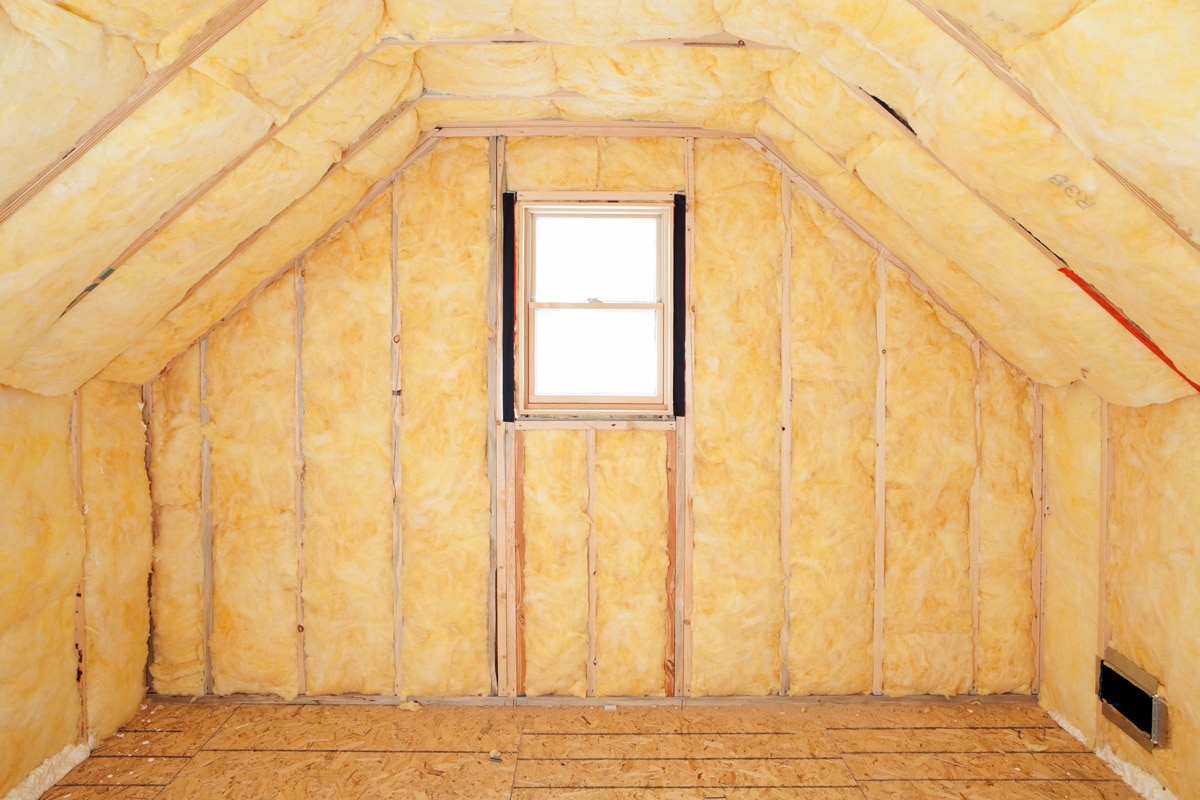
They insulate the walls, ceilings, and floors with long, narrow fiberglass pieces. It is easy to install and relatively inexpensive. It also provides good thermal and acoustic performance.
However, batt insulation can be more challenging to cut and fit than other types of insulation and does not seal well against air infiltration.
Roll Insulation
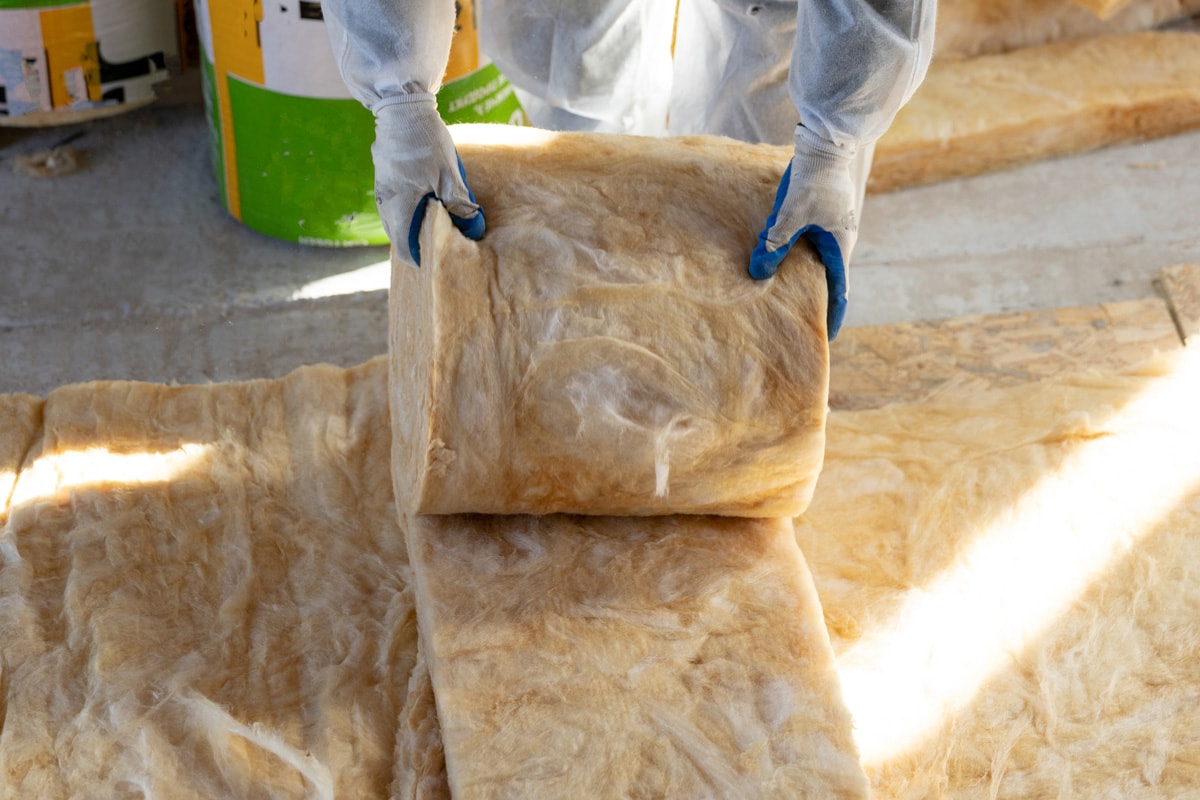
During application, you can install this insulation in walls and ceilings. In addition, you can install it in standard stud and joist spacing, free from common barriers.
You can learn more about the pros and cons of these two types in this article: Batt Insulation Vs. Spray Foam: Pros And Cons.
Advantages Of Wall Insulation
Wall insulation keeps the heat out in the summer and the cold out in the winter. In addition, it stabilizes the temperature inside your pole building for comfort. Insulating a building also helps in reducing noise pollution and energy consumption.
Factors To Consider When Insulating a Pole Barn
Before you start a pole-building insulation project, you should consider the following factors:
Climate
Extreme temperatures need insulation that can withstand both hot and cold weather. For example, a cold environment may require a higher R-value to prevent heat loss, while a pole building in a hot climate may need a lower R-value to prevent condensation.
Size
If you have large spaces to heat or cool, you'll need more insulation than in smaller spaces.
Budget
Consider your budget when selecting insulation for your pole building.
What Is A Good R-value For A Pole Building?
R-values are a measure of thermal resistance, and they indicate how well a material resists heat flow.
The higher the R-value, the better the insulation. When it comes to pole buildings or barns, a good R-value is around R-30. This rating means it can resist heat flow relatively well and stay warmer in winter and cooler in summer.
To learn more about R-value ratings, you can read this article: What Is The R-Value Of Spray Foam Insulation?
How To Seal A Pole Building
You can seal gaps with a silicone sealant to prevent water from entering and causing damage to the building.
You can check out this silicone sealant on Amazon.
Do I Need A Vapor Barrier In My Pole Barn?
Humid areas require a vapor barrier to prevent moisture from moving through walls or ceilings. Vapor barriers avoid condensation, which can lead to mold and mildew growth. Choose one that is durable and moisture-resistant, easily tacked or stapled into place.
Click here to see this vapor barrier on Amazon.
To Wrap It Up
Now that you know how to insulate a pole building, you’re one step closer to enjoying all the benefits that come with it. With proper insulation, your pole building will be more comfortable year-round, energy-efficient, and durable.
So what are you waiting for? Get started today and enjoy the benefits of a well-insulated pole building for years to come.



